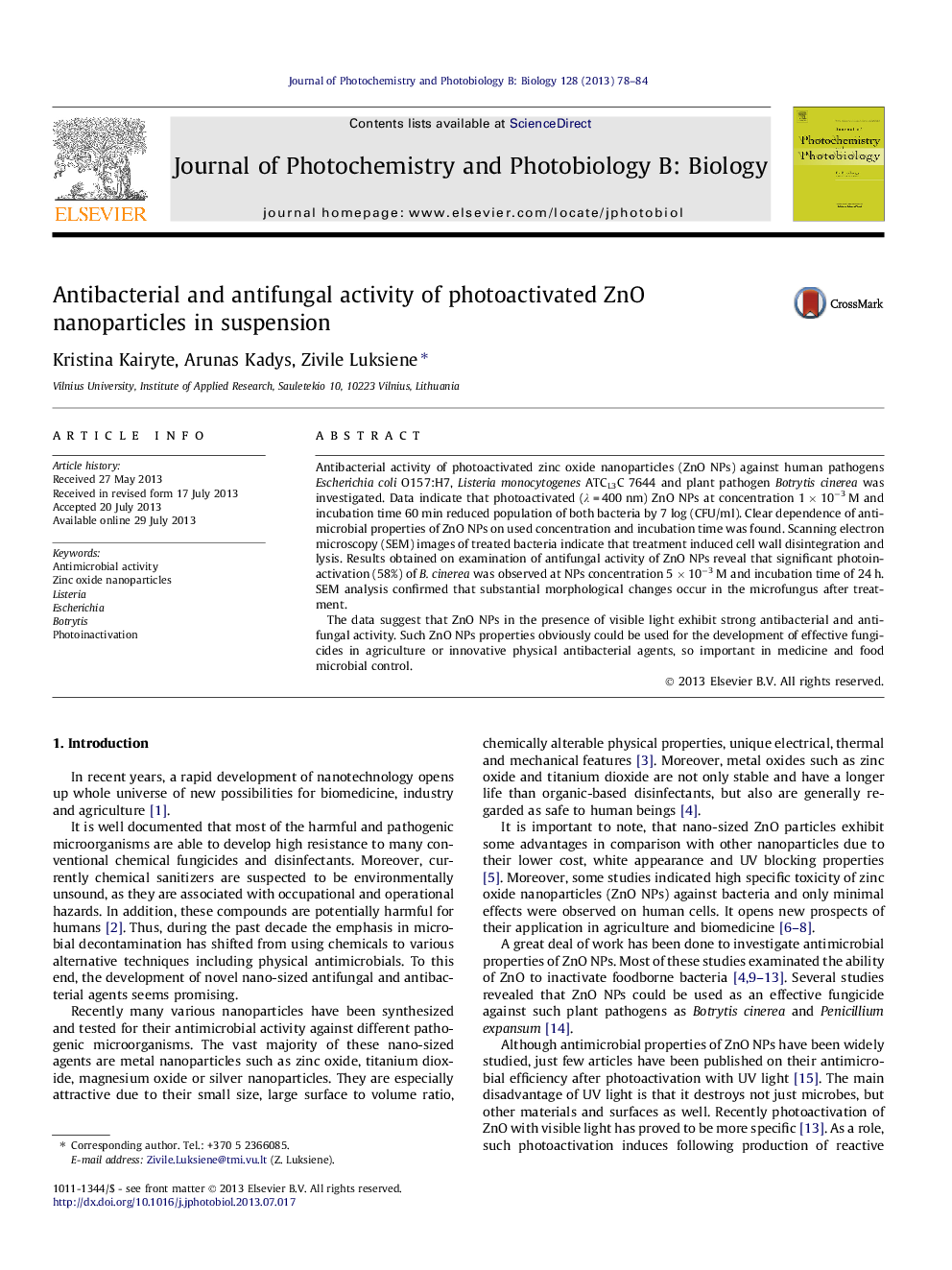| Article ID | Journal | Published Year | Pages | File Type |
|---|---|---|---|---|
| 30470 | Journal of Photochemistry and Photobiology B: Biology | 2013 | 7 Pages |
•The data suggest that ZnO nanoparticles (NPs) in the presence of visible light exhibit strong antibacterial and antifungal activity.•Such ZnO NPs properties obviously could be used for the development of effective fungicides in agriculture or innovative physical antibacterial agents, so important in medicine and food microbial control.
Antibacterial activity of photoactivated zinc oxide nanoparticles (ZnO NPs) against human pathogens Escherichia coli O157:H7, Listeria monocytogenes ATCL3C 7644 and plant pathogen Botrytis cinerea was investigated. Data indicate that photoactivated (λ = 400 nm) ZnO NPs at concentration 1 × 10−3 M and incubation time 60 min reduced population of both bacteria by 7 log (CFU/ml). Clear dependence of antimicrobial properties of ZnO NPs on used concentration and incubation time was found. Scanning electron microscopy (SEM) images of treated bacteria indicate that treatment induced cell wall disintegration and lysis. Results obtained on examination of antifungal activity of ZnO NPs reveal that significant photoinactivation (58%) of B. cinerea was observed at NPs concentration 5 × 10−3 M and incubation time of 24 h. SEM analysis confirmed that substantial morphological changes occur in the microfungus after treatment.The data suggest that ZnO NPs in the presence of visible light exhibit strong antibacterial and antifungal activity. Such ZnO NPs properties obviously could be used for the development of effective fungicides in agriculture or innovative physical antibacterial agents, so important in medicine and food microbial control.
